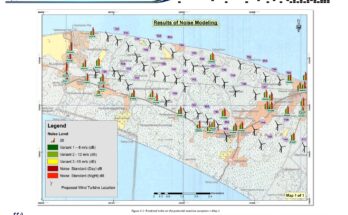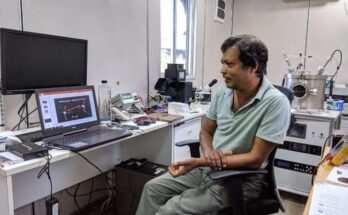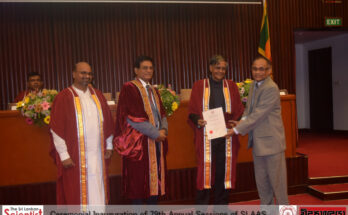Sri Lanka Journal Online, or SLJOL, is a platform maintained by the National Science Foundation to host scientific journals, giving researchers the opportunity to publicize their work to a broader audience. Currently, there are 111 registered journals on this platform, and thousands of new research papers come out each year through this platform alone. But how much of this research work gets out to the general public? This is one of the main questions we have to answer as members of the Sri Lankan science community.
“Not only is it important to ask questions and find the answers, but as a scientist, I felt obligated to communicate with the world what we were learning.” Stephen Hawking, expressed these views in his book titled “Brief Answers to the Big Questions”. So, as researchers or scientists, we have a big responsibility on our hands to communicate the findings of our research work to the general public.
The General Public has the Right
Most of the research work nowadays is funded by taxpayers’ money, so they, the taxpayers, have all the right to know what impact this research work generates and also the potential. At the same time, communicating research findings to the general public gives researchers the opportunity to reach industry people where they can use the findings for commercially viable initiatives through which both the researcher and the industry get benefits.
Scientific Publications are not Enough!
Despite the fact that we publish thousands of new research findings each year, we rarely have the opportunity to present these findings to the general public. As a result, the information generated by scientists is easily lost among the journals that, for the most part, never leave the shelves. One of the main reasons behind it is that they are written in a too scientific language, making it difficult for the non-scientific community to grasp the information from them. And also, we very rarely see the general public read scientific publications as they most often find them less interesting just because of the very scientific nature of them.
Research Findings for the General Public
A “lay summary” of a research paper is actually an abstract of the research publication written in plain language. This lay summary should be able to convey to the non-scientific community the findings of your research, its significance, and the impact it can have on answering a current problem or issue in simple terms. And also, this gives an opportunity for journalists and communicators to easily grasp the importance of this work and communicate it through mass media to the general public.
A simple lay summary should answer the main questions of “What?/Who?/How? and Why?” about the research. And also, the writer should make sure that the lay summary is free from any jargon whenever possible.
Guidelines to Write an Effective Lay Summary of Your Research
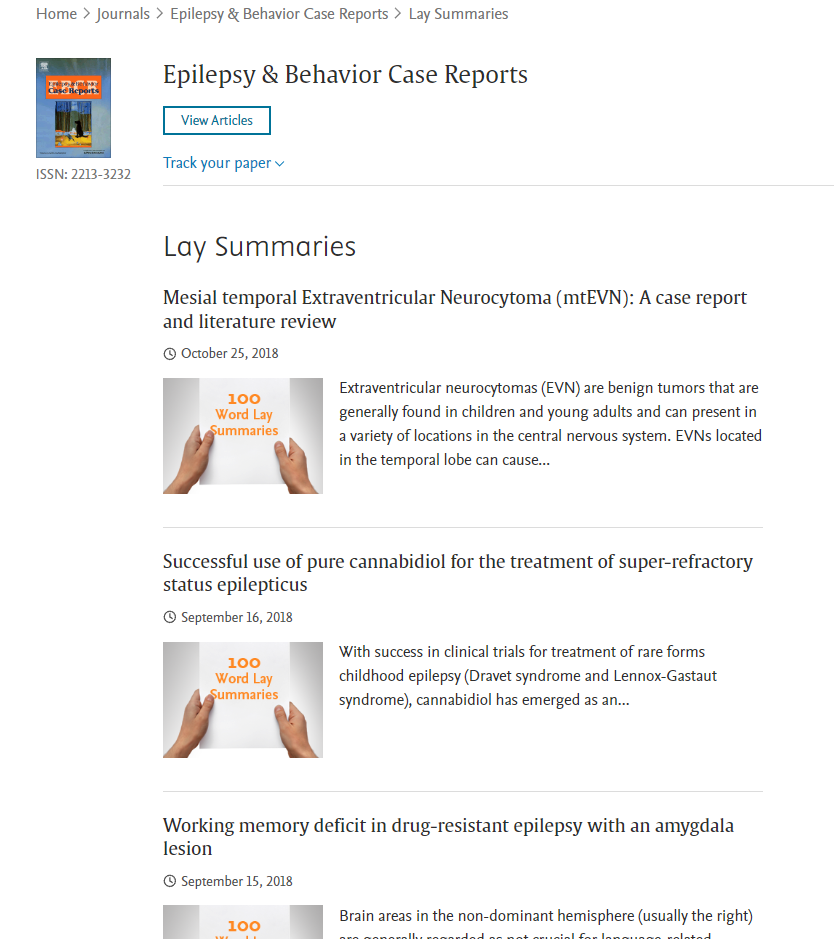
One of the leading scientific publishers in the world, Elsevier, points out the following on how to write a useful lay summary,
• Predict and cover the “so what?” factor; justify your research.
• Give some background and context to the research. What prompted you to do it?
• Follow a logical order. This may not always coincide with a temporal order.
• Explain the impact of the work – what is going to change (especially in relation to wider society)?
• Use succinct, short sentences—and write in plain English. Imagine you’re talking to an undergraduate who’s just stepped into your introductory class. Or, better still, pretend you’re trying to explain your article to a distant family member who works in retail/fashion/hospitality.
• Avoid jargon unless absolutely necessary, and explain it if you do have to keep it in.
• Use first person and active voice (“we agreed” rather than “it was agreed”).
• Use positive, not negative sentences: “You will have repeat appointments at least once a fortnight,” rather than “The usual practice is not to schedule repeat appointments more frequently than once a fortnight.”
• Images are very important—try to include one if you can.
Given below are a few examples taken from some of the world’s leading scientific publications.
The Sri Lankan Scientists’ Effort at Producing Lay Summaries
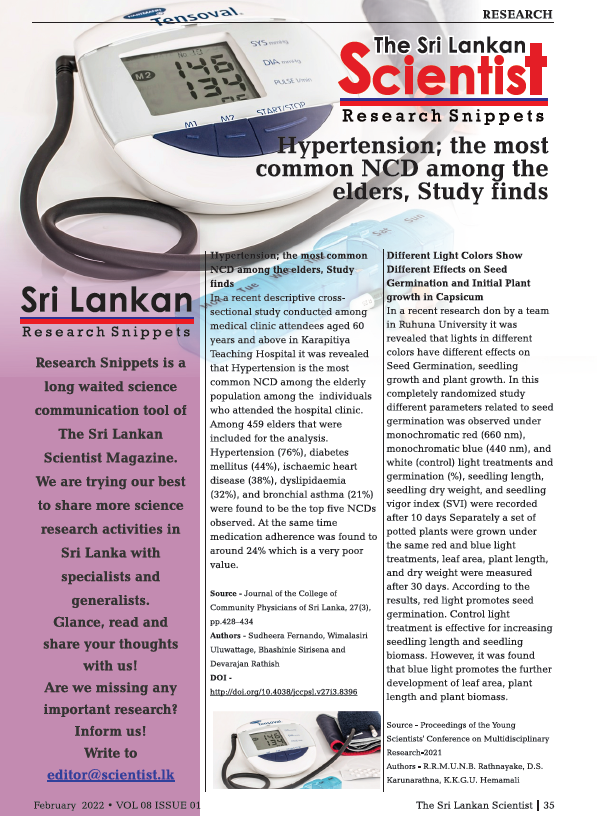
With the pure aim of promoting local research, the Sri Lankan Scientist Magazine started publishing lay summaries of selected research papers and publishing them in the print version of the magazine. The lay summaries are published under the section named “Sri Lankan Research Snippets” and about ten research papers are being added as snippets in this section for an issue. The Sri Lankan Scientist research snippet is a 100-word summary of research written in simple language, and for those who are interested in the research can read the actual research from the source given with the snippet.
SLAAS to Take the Lead
In a recent workshop organized by the Sri Lanka Association for the Advancement of Science, Prof. Manuj Crishantha stated that the SLAAS will make lay summaries mandatory for the research papers in the research conference this year. So SLAAS will be the first organization to take this step with the aim of popularizing scientific research among lay people.
Press Releases: Longer but more Effective
Just like a lay summary, a press release also acts as a handy tool in science communication. Unlike a lay summary, a press release can be considered a more detailed summary of your research, again written in plain language. Most of the time, press releases are released targeting journalists and media institutes so that they can grab them for their news articles. There are international media platforms dedicated to publishing science news releases. Eurekalert is one such platform, and hundreds of new research findings are added to this site daily in the format of press releases from various sources around the world. The main advantage of press releases over lay summaries is that the press release gives you the complete picture of the research in plain language, making it easier for the general public to study the research and analyze the real-world impact of the research by themselves. The National Science Foundation started this a few years back, and it seems they have abandoned it for unknown reasons. But the press release section and the link to that section are still available on the SLJOL home page.
Composing a Press Release
One of the main research journals in genetic engineering, PLOS Genetics, points out the following guidelines for writing press releases for the research articles they publish in their journal.
Your press release should be interesting but must not exaggerate or sensationalize the article’s findings.
Do not forget that the release will be one of many on any given day. So your writing should emphasize on why your study is different from others?
- Word count – Aim for 200-300 words.
- Title – Interesting but accurate.
- Paragraph 1 / Sentence 1 – Present the main findings of the article.
- Paragraph 1 / Sentence 2 – Mention the authors and their institution.
- Paragraph 2 – Provide more information on the study and mention the article is publishing in PLOS Genetics. Answer the question: Why is this research important?
- Paragraph 3 [Optional] – More details about the study and provide some background information and/or details of how the study was carried out.
- What’s next? Looking to the future (this can be a single sentence).
- Quote from the author(s) [Optional]
- Striking image – [Optional] Provide a striking image from the article to accompany the press release. Include a legend and image credit.
As discussed in this article earlier, there are a lot of impactful researches done annually, and most of the time, these become limited to journals. Nowadays scientists use research and research publication as just another qualification in their academic career. But if the country is to reap the benefits of this research, the communication of the research output to the necessary sectors of the general public is essential. It’s high time for the institutes that publish research journals to start publishing a set of lay summaries or press releases parallel to the original publication, so that the information available in the journal goes out to the general public in a much simpler manner.


